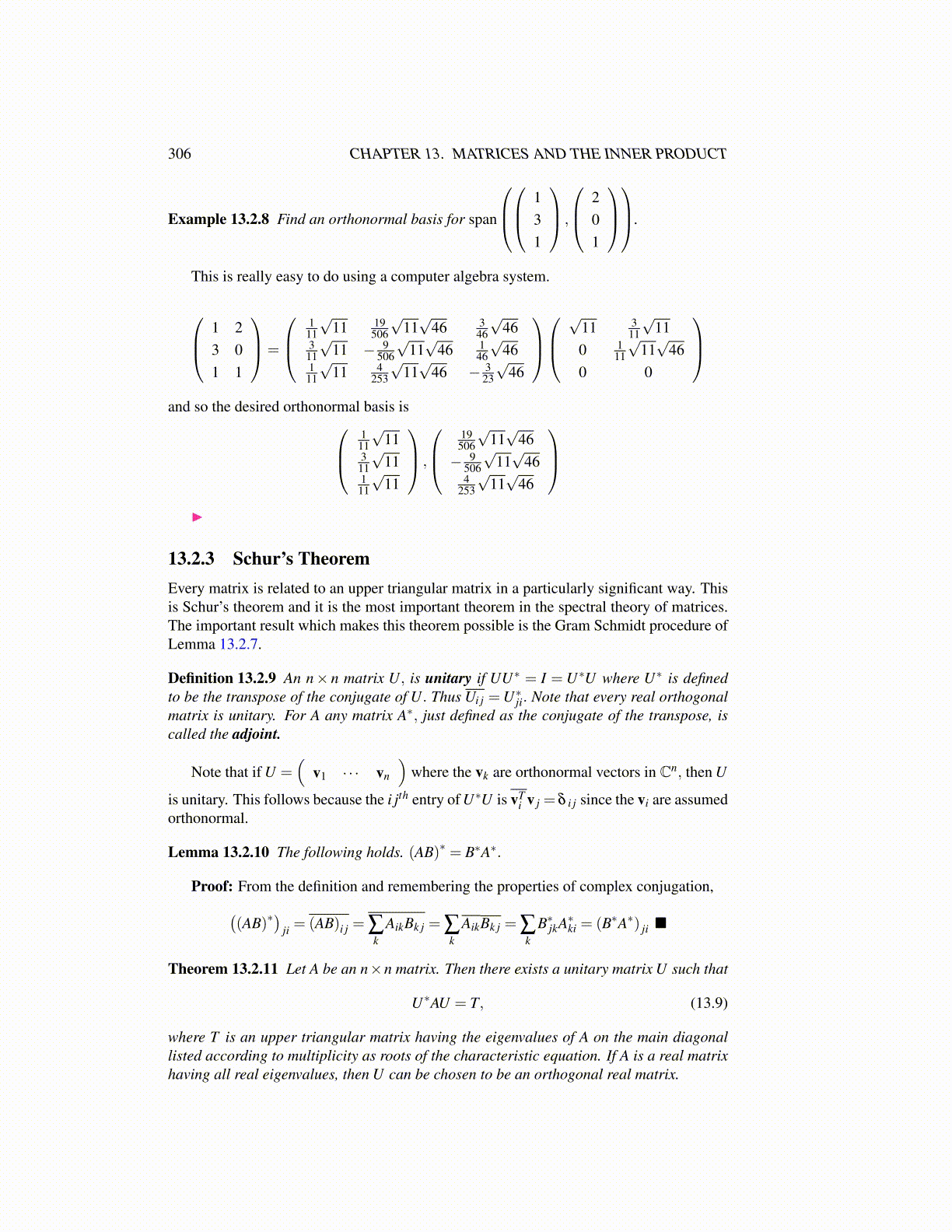
306 CHAPTER 13. MATRICES AND THE INNER PRODUCT
Example 13.2.8 Find an orthonormal basis for span
1
31
,
201
.
This is really easy to do using a computer algebra system.
1 23 01 1
=
1
11
√11 19
506
√11√
46 346
√46
311
√11 − 9
506
√11√
46 146
√46
111
√11 4
253
√11√
46 − 323
√46
√
11 311
√11
0 111
√11√
460 0
and so the desired orthonormal basis is
111
√11
311
√11
111
√11
,
19506
√11√
46− 9
506
√11√
464
253
√11√
46
▶
13.2.3 Schur’s TheoremEvery matrix is related to an upper triangular matrix in a particularly significant way. Thisis Schur’s theorem and it is the most important theorem in the spectral theory of matrices.The important result which makes this theorem possible is the Gram Schmidt procedure ofLemma 13.2.7.
Definition 13.2.9 An n× n matrix U, is unitary if UU∗ = I = U∗U where U∗ is definedto be the transpose of the conjugate of U. Thus Ui j =U∗ji. Note that every real orthogonalmatrix is unitary. For A any matrix A∗, just defined as the conjugate of the transpose, iscalled the adjoint.
Note that if U =(
v1 · · · vn
)where the vk are orthonormal vectors in Cn, then U
is unitary. This follows because the i jth entry of U∗U is vTi v j = δ i j since the vi are assumed
orthonormal.
Lemma 13.2.10 The following holds. (AB)∗ = B∗A∗.
Proof: From the definition and remembering the properties of complex conjugation,((AB)∗
)ji = (AB)i j = ∑
kAikBk j = ∑
kAikBk j = ∑
kB∗jkA∗ki = (B∗A∗) ji ■
Theorem 13.2.11 Let A be an n×n matrix. Then there exists a unitary matrix U such that
U∗AU = T, (13.9)
where T is an upper triangular matrix having the eigenvalues of A on the main diagonallisted according to multiplicity as roots of the characteristic equation. If A is a real matrixhaving all real eigenvalues, then U can be chosen to be an orthogonal real matrix.